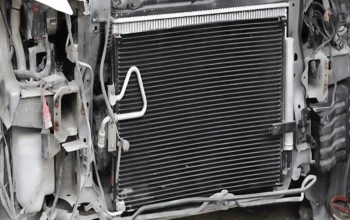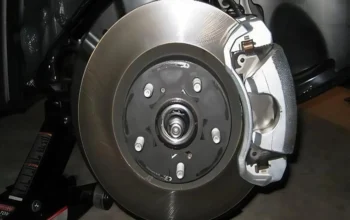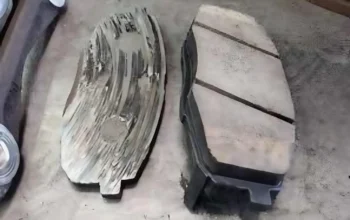Pena Global – When your radiator fan stops working, you’re not just dealing with a minor inconvenience — you’re risking serious engine damage. A broken radiator fan can cause overheating, especially during traffic or long idling. This guide will help you understand how the radiator fan works, why it might fail, and how to fix it — whether you’re doing DIY repair or prepping for a visit to the mechanic.
Table of Contents:
- 1. Understand the Signs of a Broken Radiator Fan
- 2. How the Radiator Fan Works
- 3. Identify Your Radiator Fan Type
- 4. Tools You’ll Need for Diagnosis and Repair
- 5. Start by Checking the Fuse
- 6. Inspect the Radiator Fan and Motor
- 7. Test the Coolant Temperature Sensor
- 8. Check the Fan Relay
- 9. Inspect Wiring and Ground Connections
- 10. Use a Multimeter to Check Voltage
- 11. Common Mistakes to Avoid
- 12. How to Replace a Faulty Radiator Fan
- 13. Can You Drive With a Bad Radiator Fan?
- 14. When to Call a Mechanic
- 15. Preventive Maintenance Tips
1. Understand the Signs of a Broken Radiator Fan
Knowing the symptoms early can prevent serious engine damage. Watch out for:
- Engine temperature gauge rising, especially when idling
- Radiator fan not spinning even when the engine is hot
- Strange noises (like grinding or whirring) near the fan area
- AC blowing hot air when idling
- Steam or coolant leaks under the hood
These clues point directly to issues with the fan or its control system.
2. How the Radiator Fan Works
The radiator fan pulls air through the radiator to help dissipate heat from the engine coolant.
- In motion, the car relies on natural airflow.
- At low speeds or idle, the radiator fan kicks in to cool things down.
- Most fans activate when coolant temperature reaches around 200–230°F (93–110°C) or when the AC is turned on.
Understanding this function helps in pinpointing whether your issue lies in activation timing or a mechanical failure.
3. Identify Your Radiator Fan Type
Knowing which type of fan you’re dealing with helps streamline diagnosis:
- Mechanical Fans: Operated via a belt and fan clutch, common in older vehicles.
- Electric Fans: Controlled by sensors, relays, and the ECU, found in most modern cars.
Electric fans are more common in today’s vehicles, and most issues revolve around sensors or electrical connections.
4. Tools You’ll Need for Diagnosis and Repair
Before diving in, prepare a few essential tools:
- Multimeter (for voltage checks)
- OBD2 Scanner (to read temperature sensor data)
- Basic wrench/socket set
- Flathead and Phillips screwdrivers
- Replacement fuse/relay (just in case)
- Flashlight and gloves for safety
Optional: Jumper wires or a 12V battery to bench test the fan directly.
5. Start by Checking the Fuse
Blown fuses are common culprits and easy to replace:
- Locate the fan fuse in your vehicle’s fuse box (refer to manual).
- Check for a blown filament.
- Replace with a fuse of the same amperage rating.
Always keep spare fuses in your glovebox. They’re cheap and often a quick fix.
6. Inspect the Radiator Fan and Motor
A visual and manual inspection can save you hours:
- Look for broken blades, debris, or signs of melting.
- Manually spin the fan — it should rotate freely.
- If it’s stuck or noisy, the motor bearings may be shot.
- You can also test the fan by jumping it directly to a 12V battery.
If the fan spins with direct power, the problem is elsewhere in the circuit.
7. Test the Coolant Temperature Sensor
This sensor signals when to activate the fan. A faulty reading = no fan activation.
- Use an OBD2 scanner to read live temperature data.
- Compare it with actual engine heat — mismatches signal a failing sensor.
- Replace it if it’s reading too low or erratic.
Pro tip: Some cars have two temp sensors — one for the gauge and one for the ECU/fan.
8. Check the Fan Relay
The relay acts like a switch — no click, no fan.
- Swap the relay with a similar one (e.g., horn relay) as a quick test.
- Use a multimeter to test continuity across relay terminals.
- Listen for a click when the car reaches temperature or when AC is turned on.
No sound or movement? Replace the relay.
9. Inspect Wiring and Ground Connections
Wiring issues are often overlooked but are common causes of failure.
- Check for corroded, frayed, or loose wires.
- Use a multimeter to confirm power at each section.
- Verify that the fan’s ground wire is securely connected to the chassis.
Tip: Wiggle the harness while testing — intermittent breaks sometimes only show under vibration.
10. Use a Multimeter to Check Voltage
If you’re getting 12V at the fan connector when the engine is hot, your fan should be running.
- No voltage = issue upstream (sensor, ECU, relay).
- Voltage present but no fan movement = bad motor.
Don’t forget to test with AC on, as some fans are tied to the AC system.
11. Common Mistakes to Avoid
Stay clear of these common errors during diagnosis:
- Replacing the fan before testing the power supply
- Using the wrong fuse amperage
- Overlooking fan shrouds that may block movement
- Ignoring error codes on the OBD2 scanner
- Skipping the coolant sensor when the fuse/relay are fine
Always take a systematic approach — guesswork can cost time and money.
12. How to Replace a Faulty Radiator Fan
Once you’ve confirmed the fan is dead:
- Disconnect the negative battery terminal
- Unplug the fan connector
- Remove the bolts/screws securing the fan shroud
- Take out the old fan, install the new one in reverse order
- Reconnect all components and test
Make sure the new fan activates at the correct engine temp and with AC.
13. Can You Drive With a Bad Radiator Fan?
Technically yes, but it’s very risky. Here’s why:
- Your car may overheat quickly in traffic
- The head gasket, water pump, or even the engine can be damaged
- Emergency shut-offs may engage, leaving you stranded
If you must drive, avoid idling and turn off the AC. Keep an eye on the temperature gauge.
14. When to Call a Mechanic
DIY isn’t always ideal. Call a pro if:
- You’re uncomfortable with electrical testing
- The fan is buried under other engine components
- You’ve tried basic fixes with no success
- Your car is still overheating after fan replacement
Sometimes, what looks like a fan issue may be a thermostat, coolant leak, or even head gasket failure.
15. Preventive Maintenance Tips
To avoid future fan issues:
- Clean debris from the radiator and fan blades regularly
- Flush coolant per your manufacturer’s schedule
- Test fans during seasonal maintenance (especially before summer)
- Use OEM-spec parts for reliability
Preventive care saves thousands in engine repairs.






